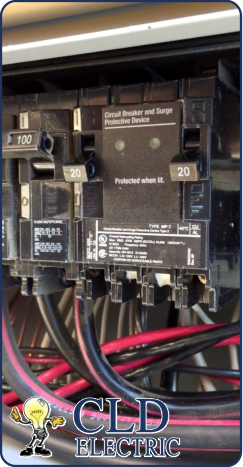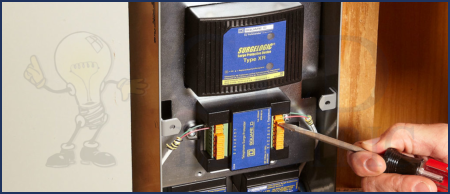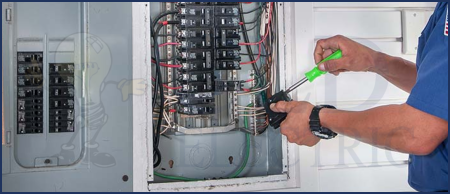 Picture it: You have saved up enough money to get your old house completely up to date. New electrical panel installed, complete rewire of the house, it’s like a brand new house. Your electrician asks if you want to install whole-house surge protection — what do you do?
Picture it: You have saved up enough money to get your old house completely up to date. New electrical panel installed, complete rewire of the house, it’s like a brand new house. Your electrician asks if you want to install whole-house surge protection — what do you do?
If you opt out of whole-house surge protection, you could be risking losing all of your electrical appliances and having to spend a whole lot of money.
What Causes a Power Surge?
A power surge can be over before you even have time to think about snapping your fingers. During that brief time, tens of thousands of volts are surging through your house. This is enough electricity to crash hard drives, fry circuit boards, and ruin all your entertainment systems.
Perhaps the most feared type of surge is a lightning induced surge. This can send a 200,000 amp jolt through a power line burning up all your wiring. However, most surge-related damage is not caused by lightning at all.
Most surges are caused by downed power lines, sudden changes in electricity, or even just a device turning on and off in your home.
Power Surge Protectors
There are two aspects to consider when protecting against surges. A whole-house suppressor is used to combat again the big power spikes while an individual circuit surge suppressor is used to protect appliances and devices.
Think of these suppressors as pressure-relief valves. During normal times, they are just there allowing normal electricity to flow through them. When they sense abnormal voltage, the device diverts the excess voltage into the ground wire. This can happen in less than a nanosecond. As soon as the voltage levels return to normal, the regular flow of electricity is restored.
Whole-Home Surge Protectors
A whole-house surge protector is typically hard-wired into your electrical panel. This will usually take a licensed electrician around two hours to complete. These devices should be rated to stop a 40,000 amp surge at a very minimum. Many options for whole-home surge protectors include thermal fuses and lights or alarms that alert you when it has taken a hit.
A whole-house suppressor can’t work completely on it’s own. There’s a chance up to 15% of excess voltage could leak. This is where it pairs up with the plug-in surge protectors. These act as buffers between the appliance and the outlet.
Circuit Protectors
Plug-in models usually land in one of three basic categories:
- multi-outlet power strip
- multitasking surge station
- UPS (uninterruptible power supply)
The multi-outlet power strip is the most recognizable. It has outlets that you can plug devices into and the option to turn on and off the strip. A multitasking surge station has this same layout with the addition of phone and cable jacks. The UPS goes above and beyond and completely cleanses electric power of fluctuation as well as offers a battery backup in case power goes out.
Purchasing Circuit Protection
What should you look for when purchasing circuit protection? Below is a list:
- Meets UL Standard 1449 (second edition)
- Clamping voltage of 400 volts or less (the lower the number, the better the protection)
- Absorbs at least 600 joules of energy
- Protects all three incoming lines: hot, neutral, and ground
- Stops functioning when damaged by a surge
If you are looking for an electrician to install a whole-house surge protector for your home, feel free to give us a call!

Contact CLD Electric
Your Electrician In San Diego – CLD ElectricLicensed, Bonded & Insured
icense: C10# 877075
We answer our phones 24 hours a day.

